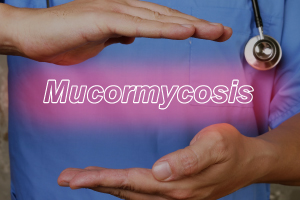

We know our bones. We know our muscles. But fascia remains a missing link in most of our conversations about movement, posture, pain, and recovery. The surprising fact: that fascia is everywhere- it’s that no one talks about it until something goes wrong.
Fascia is a thin but strong layer of connective tissue that helps your body move and stay in shape. In your body, there are different types of fascia. Two very important ones are the plantar fascia, which is found on the sole under your foot, and the muscle fascia, which wraps around your muscles. These two play a big role in how well you can move and how strong you feel.
Let’s learn how they affect your flexibility, strength, and overall movement and how you can take care of them to feel better every day.
What is Fascia?
Fascia is like a stretchy net under your skin. It covers your muscles, bones, and organs, holding everything in the right place. That’s the fascia meaning in a nutshell.
Think of it like a cling film that covers food. Fascia protects and supports!
Here’s a simple table to understand better:
| Type of Fascia | Where is it? | What it does |
| Plantar Fascia | Bottom of your foot | Supports the arch, helps you walk and stand |
| Muscle Fascia | Around your muscles | Helps muscles move smoothly and stay flexible and strong |
When fascia works well, your body feels good. But when it gets tight, stiff, or injured, you may feel pain or weakness.
What is Plantar Fascia?
The plantar fascia is a thick band of tissue on the bottom of your foot. It goes from your heel to your toes and supports your foot arch.
Main Jobs of Plantar Fascia:
- It holds up the arch of your foot
- Helps your foot bend and move properly
- Absorbs shock when your foot hits the ground
- Gives your foot power when you push off to walk or run
Your plantar fascia can handle up to 2 times your body weight when you walk! That’s a lot of strength in one small area.
If it gets hurt or tight, walking and standing can become painful.
What is Muscle Fascia?
Muscle fascia is the thin layer around your muscles. It looks a bit like a net or film.
This fascia lets your muscles move smoothly, like sliding doors. It also helps with blood flow and keeps everything in place.
Main Jobs of Muscle Fascia:
- Helps your muscles slide easily when you move
- Keeps muscles in the right place
- Protects muscles from small injuries
- Helps your muscles heal after exercise
There are around 600 muscles in your body and every single one has fascia wrapped around it!
When muscle fascia gets tight, your muscles may feel stiff, sore, or tired.
How They Affect Flexibility
Being flexible helps you move easily without pain. It also makes daily things like walking, bending, or stretching feel smoother and lighter.
Let’s see how plantar fascia and muscle fascia play a part in this.
What is Flexibility?
Flexibility means how easily you can stretch, bend, or move.
| Fascia Type | How it Helps Flexibility |
| Plantar Fascia | Keeps the bottom of the foot soft and springy, so you can walk and balance easily |
| Muscle Fascia | Lets muscles stretch and move without getting stuck or stiff |
If your fascia becomes stiff, you may feel:
- Pain when walking or running
- Tightness in muscles
- Trouble touching your toes or bending your legs
So, healthy fascia = more movement with less pain!
How They Affect Strength
Strength helps you do things like lift, push, carry, or climb stairs without feeling weak or tired. Fascia plays a quiet but powerful role in supporting your body’s strength.
Let’s find out how.
What is Strength?
Strength is your body’s ability to push, pull, or lift things.
| Fascia Type | How it Helps Strength |
| Plantar Fascia | Gives power to your foot so you can stand, jump, or push off the ground |
| Muscle Fascia | Supports the muscles so they can work harder without getting hurt |
If fascia is tight, your muscles can’t do their best work. You may feel weak, tired, or sore even without a hard workout.
Note: Strong fascia = strong movement and less risk of getting hurt!
Common Problems
When fascia gets tight, overused, or injured, it can lead to pain and discomfort. Here are some common problems people face with plantar fascia and muscle fascia.
Plantar Fascia Problems
- Plantar Fasciitis – pain in the heel and bottom of the foot
- It can happen from:
- Standing or walking too much
- Wearing flat or old shoes
- Having tight calf/leg muscles
Muscle Fascia Problems
- Myofascial Pain – muscle pain caused by tight or stuck fascia
- It can happen from:
- Poor posture
- Stress
- Sitting too long
- Overusing muscles without rest
These problems can make daily life difficult– like walking, exercising, or even sitting for long!
How to Keep Fascia Healthy
Here are some easy tips to take care of both plantar fascia and muscle fascia:
- Stretch every day – especially legs, calves, and feet
- Massage or use a foam roller – this helps relax tight fascia
- Wear good shoes- Wear good shoes with support. No worn-out flats!
- Move often – walking, yoga, and swimming are great
- Drink plenty of water – fascia needs hydration to stay soft and flexible
- Don’t ignore pain – early care is better than long-term problems
Fascinating Fascia Facts (Quick Stats You’ll Want to Know!)
Sometimes numbers can help us understand how common fascia problems are and why it’s so important to take care of them. These quick facts show just how much fascia matters in everyday life.
- Around 10% of people get plantar fasciitis in their life
- Muscle fascia pain is one of the most common reasons people visit physiotherapists
- About 70–80% of people with plantar fasciitis feel better within 9 to 12 months.
Read More: Heel Pain Causes: Here’s What’s Behind That Nagging Pain
Conclusion
Your plantar fascia and muscle fascia may be small, but they play a big part in helping you move, stay strong, and feel good. When they’re healthy, everyday actions like walking, stretching, and lifting feel smooth and easy.
A little daily care goes a long way so keep your fascia happy, and your body will thank you with better movement and less pain.




